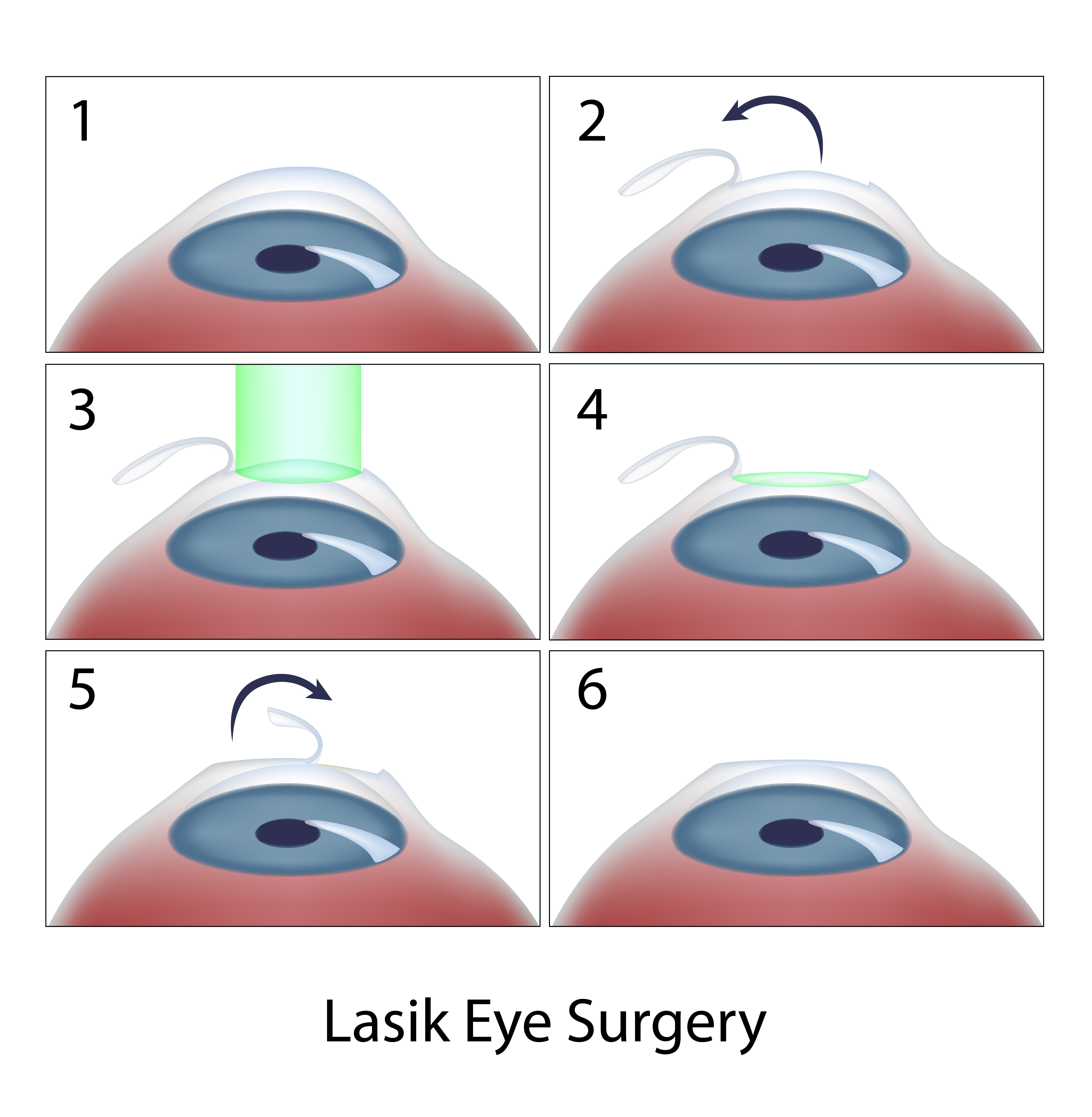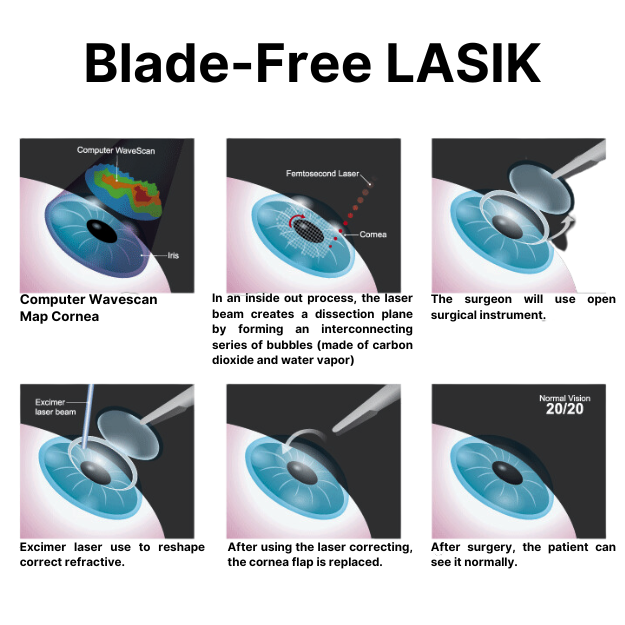Updated on December 13, 2024
Blade vs. Bladeless LASIK

Vision Center is funded by our readers. We may earn commissions if you purchase something via one of our links.
Which is Better: Blade or Bladeless Lasik?
The terms "blade" and "bladeless" refer to how the eye surgeon creates the corneal flap during the LASIK procedure. Other than the flap creation, the surgeries are essentially the same.
Bladeless LASIK is a newer technique. In modern LASIK surgery, many surgeons choose bladeless over traditional LASIK.
However, this doesn’t necessarily mean bladeless LASIK is always the better choice. Both forms of LASIK have advantages and disadvantages.
What is Bladed LASIK?
Bladed LASIK, also known as traditional LASIK, creates a corneal flap using a microkeratome blade. The procedure typically costs about $200 to $400 less than bladeless LASIK. However, it’s more common for people to require a secondary enhancement procedure after bladed LASIK.

We listed its pros and cons in the table below:
| Pros | Cons |
| Lower risk of diffuse lamellar keratitis, a complication that causes inflammation underneath the corneal flap | Higher risk of decentration, which means the laser is not centered correctly on the eye, potentially resulting in irregular astigmatism |
| Less suction time is required, which may be more comfortable for the person | Higher risk of flap complications such as flap wrinkles or irregular flaps |
| It may be a better option for some enhancement procedures, especially if you received traditional LASIK originally | Higher risk of higher-order aberrations, which are light-related distortions that cause glare, halos, ghosting, and starbursts |
| Often costs less than bladeless LASIK |
What is Bladeless LASIK?
Bladeless LASIK, or “all-laser” LASIK, creates the flap using a femtosecond laser. The procedure typically uses iLASIK and Intralase.
Many surgeons favor bladeless LASIK over bladed LASIK because it offers consistent results and excellent visual outcomes. However, bladeless procedures cost about $200 to $400 more than bladed procedures.

Bladeless LASIK results in fewer people needing enhancement procedures. However, some people may require a second "touch-up" LASIK procedure to further correct their vision.
We listed some of its pros and cons in the table below:
| Pros | Cons |
| Creates more consistent corneal flaps, resulting in fewer flap-related complications | Higher risk of diffuse lamellar keratitis, a complication that causes inflammation underneath the corneal flap |
| Creates thinner corneal flaps, allowing the surgeon to correct higher prescriptions with less corneal tissue | Higher risk of light sensitivity, but this side effect is usually temporary |
| Lower risk of dry eyes | Some surgeons charge more for bladeless LASIK, while others charge the same price as traditional LASIK |
| Often costs less than bladeless LASIK | |
| Better overall vision quality | |
| Better night vision with less glare and halos | |
| Lower risk of surgically-induced astigmatism | |
| Vision improves slightly faster after surgery |
Which Type of LASIK Is Best For Me?
Unfortunately, without medical guidance, it’s impossible to determine which type of LASIK procedure is best for you. You'll need to call a LASIK center and schedule an appointment.
Your doctor will ask you about your overall health, eye health, and your expectations for vision correction. After this, your doctor can determine which type of technology to use during your eye surgery.
Is Bladeless LASIK Safe?
Bladeless LASIK is generally safer than traditional LASIK because there's no need to create a corneal flap. This means fewer corneal flap-related complications during the procedure.
Additionally, healing after bladeless LASIK is quicker than bladed LASIK, so you can return to normal activities much faster. There are also fewer post-op visits to your surgeon. However, you’ll still need to follow all aftercare instructions to achieve the best results.
Can I Combine Blade or Bladeless LASIK With Other Types of LASIK?
The short answer is yes. Think of LASIK as a procedure that involves two steps. The first step is flap creation, and the second step is corneal reshaping. This is done through either bladed or bladeless LASIK methods
The options for corneal reshaping are:
- Conventional LASIK. The laser corrects your vision by flattening your cornea. This may result in a higher risk of night vision problems such as halos or glare.
- Wavefront-optimized LASIK. Instead of simply flattening the cornea, wavefront-optimized techniques maintain your cornea’s natural curvature.
- Wavefront-guided LASIK. This customized LASIK procedure minimizes higher-order aberrations, resulting in higher-quality vision.
- Topography guided LASIK. Uses a topographer to map out your cornea, allowing the surgeon to customize a treatment that delivers sharper vision with fewer light distortions.
The options for flap creation and corneal reshaping may be combined in various ways. Your eye surgeon can help you determine which options are best for you.eons favor bladeless LASIK over bladed LASIK for its consistent results and excellent visual outcomes.
In this article
6 sources cited
Updated on December 13, 2024
Updated on December 13, 2024
About Our Contributors
Dr. Melody Huang is an optometrist and freelance health writer with a passion for educating people about eye health. With her unique blend of clinical expertise and writing skills, Dr. Huang seeks to guide individuals towards healthier and happier lives. Her interests extend to Eastern medicine and integrative healthcare approaches. Outside of work, she enjoys exploring new skincare products, experimenting with food recipes, and spending time with her adopted cats.
